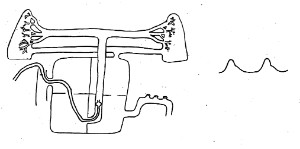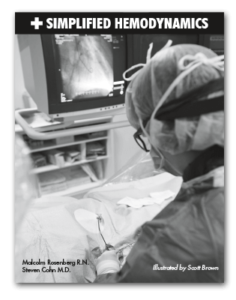 Don’t let ICU Nurses bamboozle you.
Don’t let ICU Nurses bamboozle you.
Hemodynamics are simple.
by Malcolm Rosenberg, RN & Steven Cohn, MD
$11.95
For the beginning or moderately experienced ICU nurse, there is no better explanation of Hemodynamics. Is that claim outrageous? Consider the following:
- Authored by a board certified cardiologist (for accuracy) and a nurse educator (for clarity).
- Subject is covered in 56 illustrated pages, with brief, easy-to-understand explanations.
- One simple diagram (below) is used throughout the book to illustrate normal heart function, and 11 states of cardiac and vascular disease.
- There is no assumption of previous cardiac knowledge or experience.
- This book will prepare you to pass the hemodynamic section of hospital ICU tests and to answer related questions during the interview with your nurse manager.
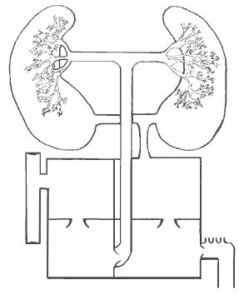 This schematic drawing of the heart and lungs is used to explain the hemodynamics of the normal heart and 13 disease states.
This schematic drawing of the heart and lungs is used to explain the hemodynamics of the normal heart and 13 disease states.
You may not understand hemodynamics now but this drawing will make it easy for you to grasp.
Excerpt from What is a Swan-Ganz Catheter? Chapter
A swan is a long tube that is usually threaded from the subclavian vein through the superior vena cava into the heart.
It has a pressure sensor on the tip. The pressure shows up on a screen that gives the numerical value and a graphical picture of the pressure changes. If the pressure is changing as in a heartbeat the high and low values are given (systolic and diastolic).
The other major feature of a swan is a 1 cc balloon near the distal tip – very much like a foley catheter. It is inflated with a 1 cc syringe very much like a foley catheter. When the catheter is inflated and the balloon gets stuck in a branch of the pulmonary artery its called a “wedge”. I will go into much, much more detail on this later. But very briefly the wedged catheter tip occludes any blood flow from behind it.
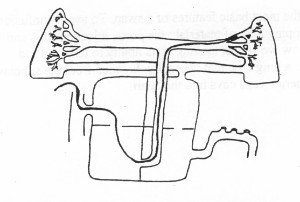
The pressure sensor on the tip measures only the blood pressure distal to it. That’s a Swan-Ganz in a nut shell.
The Swan-Ganz catheter was designed by two doctors, Dr. Harold “Hairy Bird” Swan and Dr. William “Wild Bill” Ganz. A Swan-Ganz catheter is used to measure pressures in different parts of the heart and lungs. The pressures usually show on a screen with the number and a graphic picture of the pressures.
The “swan,” as you’ll soon be calling it, is inserted through the right side of the heart. The insertion is similar to a central line – usually into the subclavian vein or left internal jugular vein. From there it passes through the superior vena cava. The pressure here is called central venous pressure.Normal values are 0-5mmHg.
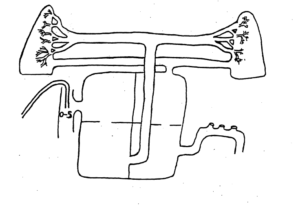
Next, as the doctor continues to advance the catheter, you will see the smooth line start to vary. This indicates the tip is in the right atrium. You would expect this since the atria do have small pumping actions. So it shows as small waves. Normal values are 2-5mmHg. At this point, the balloon is inflated. This enables the catheter tip to “go with the flow.” The blood flow pulls the catheter tip through the tricuspid valve.
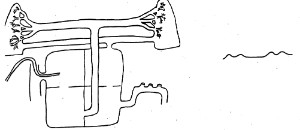
The tip continues and passes through the tricuspid valve into the right ventricle. Again, you know it’s position by changes in the pressure wave form. You can clearly see the ventricle contracting by the systolic and diastolic pressures. Normal values are 20/2.
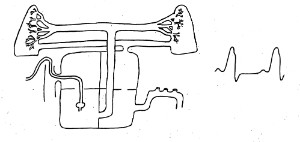
The tip must continue to flow past the right ventricle. You wouldn’t want the probe to hang around too long in the right ventricle. Your heart’s reaction to a lingering probe is sort of the way you feel about a sigmoidoscopy. You’d throw lots of PVC’s- to say the least.
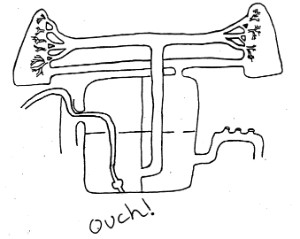
The probe leaves the ventricle, passes through the pulmonic valve and enters the pulmonary artery. Again, we know where the probe is by the wave form. The wave form is clearly arterial. By “arterial,” we mean formed by the pumping action and the valves opening and closing: This same form would appear when taking blood pressures with an “A” line in the radial artery.
